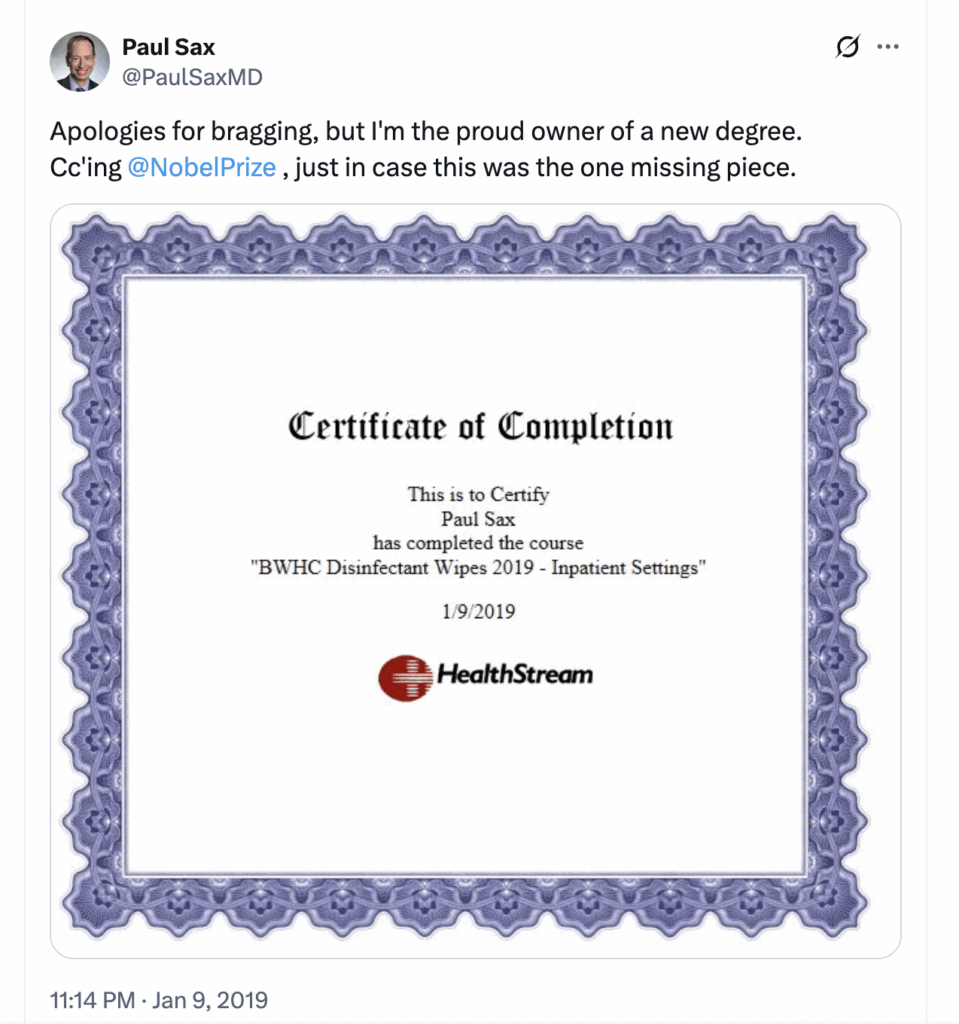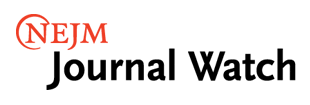An ongoing dialogue on HIV/AIDS, infectious diseases,
September 10th, 2025
When Required Learning Modules Surprise You (In a Good Way)
 Like most clinicians, I have a checkered history with required online learning modules. You know the drill: click play, get lectured in monotone about hand hygiene or fire safety, then spend the next 8 minutes desperately searching for the fast-forward button, hoping it’s not disabled.
Like most clinicians, I have a checkered history with required online learning modules. You know the drill: click play, get lectured in monotone about hand hygiene or fire safety, then spend the next 8 minutes desperately searching for the fast-forward button, hoping it’s not disabled.
My personal low point (or high point, depending on your perspective) came years ago, when I proudly earned my Certificate of Completion for Disinfectant Wipes — Inpatient Settings. I even tweeted about it at the time, suggesting the Nobel Prize committee might want to give me a call.
(I’ve done you the favor of uploading proof to this site as the featured image, in case you doubt my credentials and are allergic to social media.)
So, when our hospital system announced an incentive program that required completion of something called the Equity-Informed High Reliability Organization (EIHRO) Level 1 Module, I wondered — who comes up with these titles? Is it a team of consultants paid by the syllable? My expectations hovered somewhere between “this is going to be tedious” and “could they imagine anything more soul-crushing?”
But here’s the shocker: it was excellent.
It’s not that the message was so profound or novel. It was the presentation — dynamic, engaging, and useful. Kudos to the narrator for keeping the topic moving along at a brisk pace and the video producer for including images and videos that didn’t look like they were pasted from a royalty-free site or bargain basement clip-art. The content came from a company called SG Collaborative Solutions, which was acquired years ago by a much more familiar player in this usually grim space, HealthStream.
The topic was how to address risk. Instead of the usual “don’t do this, do that” checklist, or calling bad events “mistakes” that trigger new policies, we need to understand the settings and systems that lead to adverse outcomes. It’s not enough to slap “Safety First!” into a mission statement. If you don’t understand the pressures of the actual workplace, the slogan does nothing. The recommended approach instead acknowledges that we all have competing priorities — productivity, efficiency, personal lives — and aims to optimize care in that realistic context.
Call me convinced. It’s a good lesson whether you’re a clinician caring for patients or at home reaching for a dish on a shelf that is a bit too high to reach comfortably. Wouldn’t it be smarter to keep a step stool handy than to wobble precariously on a kitchen chair? And for people who text and drive, just stop already. Which reminds me — to the cab driver in Philadelphia who was texting our entire drive to the airport, it’s not safer just because (as you confidently said when I asked you to stop), “It’s just my son.”
Now, if you’ll excuse me, I’m going to update my CV:
- 2019: Certified in Disinfectant Wipes
- 2025: Equity Informed High Reliability Organization (EIHRO) Level 1 Module
Could this addition tip the scales for the judges in Stockholm?


Glad this one was entertaining. But there’s another unfair thing about these required modules that you didn’t mention. Most of us do them during our “free” time, and sometimes the entire yearly package takes an hour or longer. Anyone ever get paid by their hospital or healthcare system to complete them? I didn’t think so.
I work at MGH and felt the same way, I can’t remember the last time I laughed out loud during a required online training module. I even went home and told my husband about the training I received. That’s pretty good.
I know, great — right? The reference to a quite infamous zoom mishap really took me by surprise.
-Paul
We have FOMO now. I’d like to be surprised too. SGCS had a podcast “The Hidden Science” – pretty good.